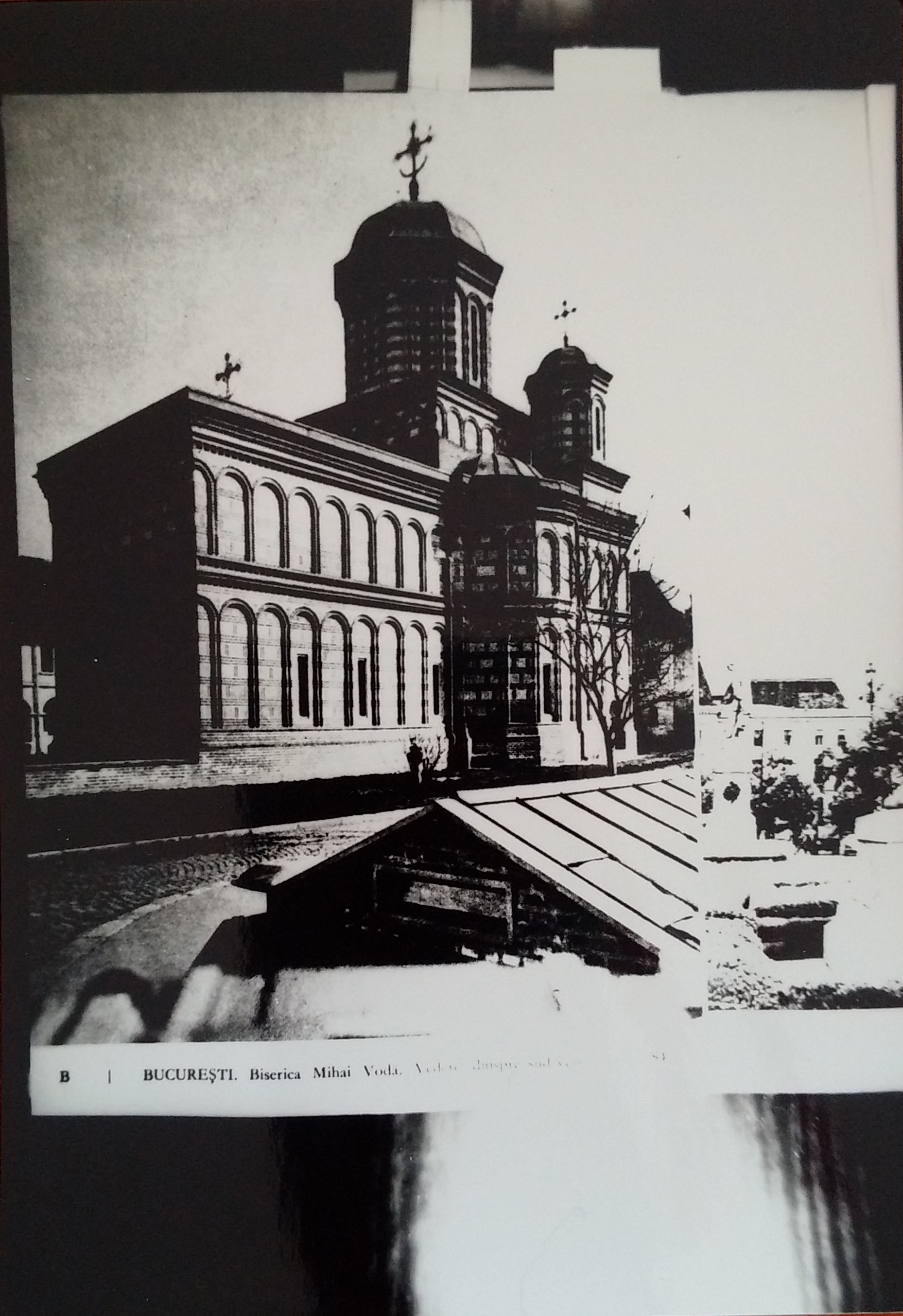This photograph from the Ștefan Gane Collection is a testimony to the Ceaușescu regime's policy of transforming the urban landscape and destroying everything that was opposed to its vision. An example of this is the almost total destruction in 1985 of the Mihai Vodă Monastery, of which only the church and the bell tower were preserved and moved to another site down an incline.
The church of the former Mihai Vodă Monastery is an emblem of premodern Bucharest and one of the oldest buildings that have been preserved in Bucharest. Built in 1594, over time it had several destinations, including Princely Residence, Military Hospital, Medical School, and headquarters of the State Archives. It was founded by one of the most important rulers in the Romanians' national history: Mihai Viteazul (Michael the Brave). He was the ruler of Wallachia between 1593 and 1601 and the only leader of one of the premodern states existing in the modern perimeter of modern Romania that unified, for the period 1600–1601, a territory roughly equal to that of today's Romania. Thus Mihai Viteazul was considered from the nineteenth century an important figure in national history. Under the communist regime, historiography of gave Mihai Viteazul a much more important place in national history than he had had before. He was named as the prefigurer of the so-called "Union of 1918". This historical event consisted of the annexation of the historical regions of Austro-Hungary, inhabited mostly by Romanians to the so-called Old Kingdom of Romania and was materialised in the Peace Treaties of Saint-Germain (1919) and Trianon (1920). This image of Mihai Viteazul as anticipator of the “Union of 1918” was strongly promoted under the Ceauşescu regime not only through textbooks and historical works, but also through the historical film Mihai Viteazul, made in 1970.
Despite the overwhelming importance the communist regime granted to Mihai Viteazul, the monastery complex he founded became the most famous victim of the total demolition of Bucharest. The site where it was located, a high position in the urban landscape of the capital, was assigned by the communist authorities to the building that is now home to the Romanian Parliament. In 1985 the monastery was demolished, but not entirely. At the last moment, the church and the bell tower were moved, despite the initial plan that everything should be destroyed. The church was moved to the base of the hill, where it was subsequently hidden by communist buildings. The church was originally located on Mihai Vodă Hill, on the former Archives Street no. 2, and was moved to Sapienţei Street no. 4, where it still stands. This photograph was taken clandestinely by Ștefan Gane a few months before the edifice was moved, and went with him to France in 1985 when he emigrated. The photo in question, which is today in the Ștefan Gane collection, is in the original, 10x15 cm, printed on black and white paper. Today it is an important historical source for understanding and writing a part of Romania's recent history in connection with the project of destruction of the national patrimony practised by the communist regime between 1977 and 1989.

